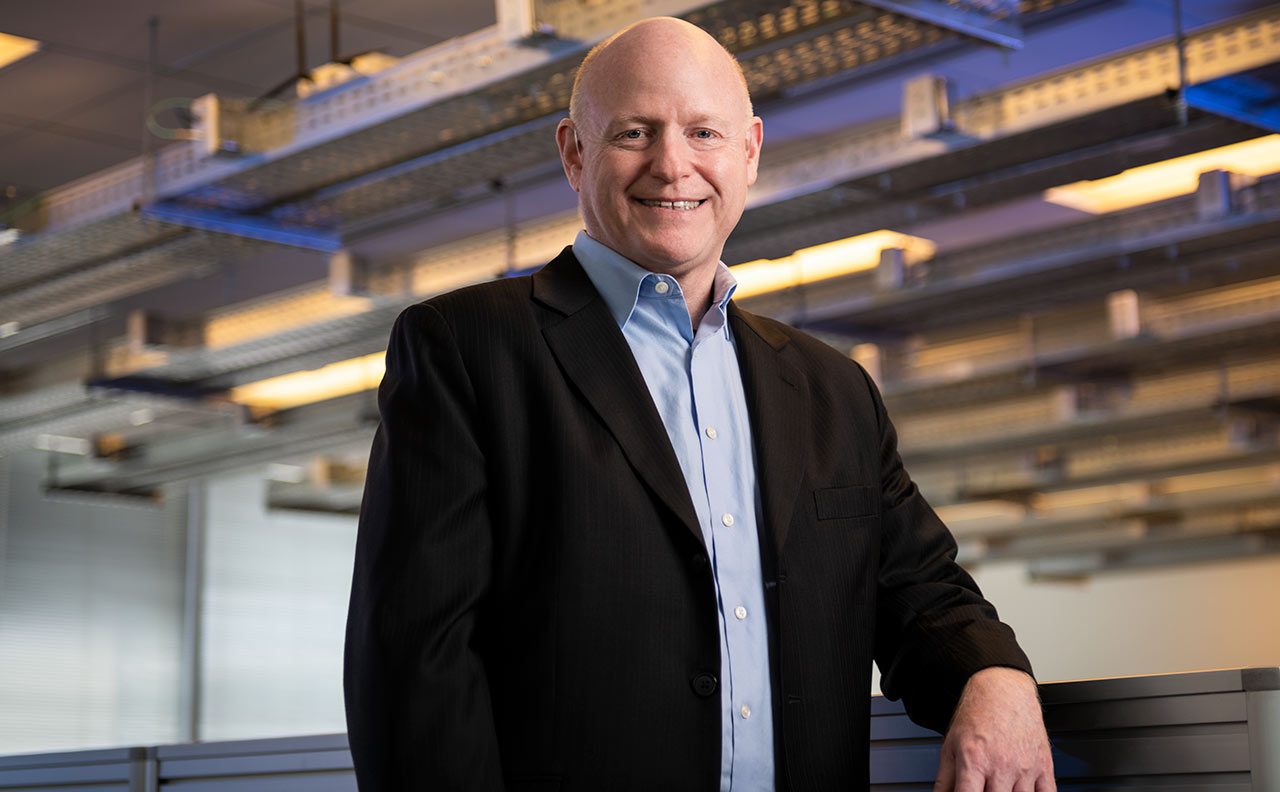
In 2017 the United States was fighting a common enemy—robocalls from overseas operations that scammed people of their hard-earned savings.
Citizens were turning to the federal government to ease the onslaught of calls that drained the bank accounts of vulnerable Americans. The Federal Communications Commission, the agency in charge of telecommunications in the U.S., turned to Eric Burger (Ph.D. CS ’06). An executive and then a professor in the communications industry for 20 years, he had built a reputation as an expert with the know-how to potentially slow or halt the assault of harmful calls.
“They wanted me [at the FCC] for robocalling,” Burger says. “But I was able to accomplish much more while I was there.”
He had wanted to work as an adviser with the FCC more than a decade earlier, but was told a Ph.D. was a requirement for the job, so he turned to Illinois Institute of Technology. A longtime industry veteran, he had years of real-world experience as a chief technology officer and held a bachelor’s degree from Massachusetts Institute of Technology and a master’s degree from Catholic University of Leuven in Belgium. A colleague guided him to the Department of Computer Science, from which he graduated in 2006.
Dreams of an FCC advisory position faded—he was asked to consider the role in 2008 but was passed over—and he eventually took a faculty position at Georgetown University. Then, a federal official contacted Burger in 2017.
“The FCC called me, and I thought it was a joke,” he says. “I thought it was Lucy pulling the football from Charlie Brown. I asked, ‘Is it real this time?’ And they said yes.”
He took a position as chief technology officer and began working on a key FCC initiative—reducing the amount of robocalls in the U.S. The STIR/SHAKEN system was the result, named as a play on James Bond’s martini of choice. Before calls are connected, the system verifies if the calling phone number is associated with a customer or if it’s unknown. If the evidence doesn’t stack up, the call is blocked. The system isn’t perfect, and sometimes a suspected robocall is listed as “spam likely” instead of blocking it altogether.
The program was just one of the projects he took on during his time at the FCC; Burger’s expertise goes well beyond just robocalls.
“Eric is recognized as a leader in network security and wireless in a big way, and those people are in short supply,” says Jon Pelson, a former coworker, long-time friend, and author of Wireless Wars: China’s Dangerous Domination of 5G and How We’re Fighting Back. “That made him important at the FCC.”
Burger buffed the country’s cybersecurity, particularly cell infrastructure that could have been open to foreign surveillance. He also worked to improve the technology to identify location information from 911 calls, helping first responders better know where to go when a call comes in—especially as cell phones overtook landlines as the preferred telecommunications device.
Suicide prevention wasn’t on Burger’s mind until nonprofit organizations approached the FCC, but it became his proudest achievement, culminating with the introduction of the 988 number—the National Suicide Prevention Lifeline.
“Do you know the full number of the suicide hotline before 988?” he asks. “There needed to be a better way [to contact mental health professionals].”
The “N11” numbers, such as 911 or 511, were all taken. So the first idea was to loop a suicide hotline into the 911 network. The mental health community was against that idea, as it was worried about police response and an increased call volume to 911 operators. A study found that 988 was the most memorable and easy-to-dial number outside of an “N11.” Thus, the suicide prevention lifeline was created.
“We know how many attempted suicides there are a year, and we know how many are successful. We know the impact of being able to get counsel is on suicide prevention, so we could conservatively say this’ll save 1,200 people’s lives a year,” Burger says. “That’s huge.”
The White House took note of Burger’s work and in 2019 asked him to take on another long-standing problem—working with the U.S. Department of Defense and telecommunications companies to offer more 5G service.
The Trump White House took note of Burger’s work and in 2019 asked him to take on another long-standing problem—working with the U.S. Department of Defense and telecommunications companies to offer more 5G service.
“I got a call from the White House asking to talk about ‘an interesting problem to solve,’” Burger says. “The problem was moving spectrum used by the Department of Defense to commercial use.”
Cell phones and other wireless communication are given a slice of radio spectrum space to operate—for example, the airline sector is given the frequencies from 108 to 136 megahertz for radio navigation and air traffic control. The FCC doles out frequency bands to the private sector and the National Telecommunications and Information Administration does that for the federal government. The problem was the rising use of the 5G broadband network. Cell phone carriers need more and more spectrum space to keep up with growing broadband use.
“First, there were calls and texts, then video calls, then augmented reality, then virtual reality—and they all need more frequencies,” Burger says.
When Burger arrived, some of the best frequency to use for 5G was under DOD control. The decision to change uses came down to a policy choice, Burger says.